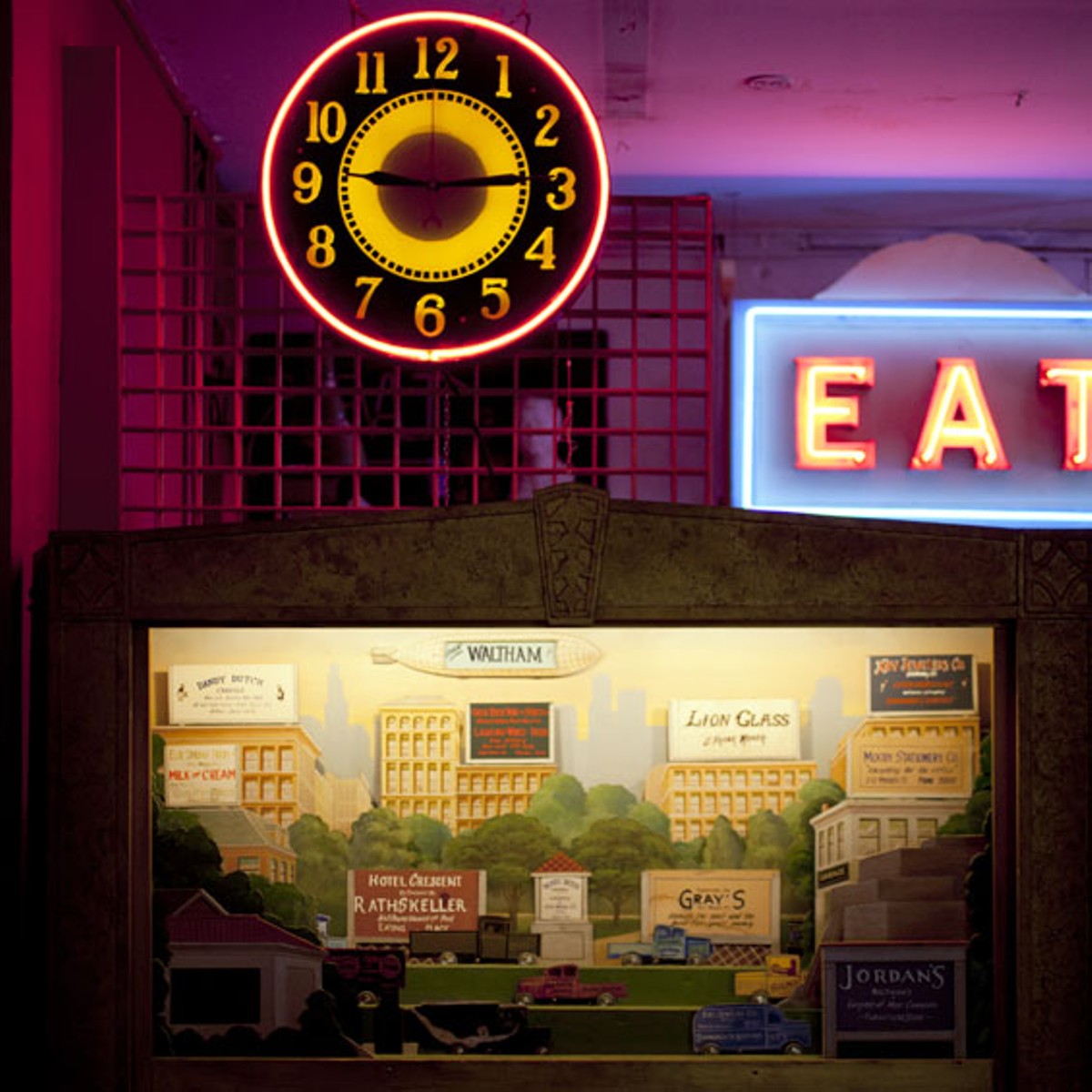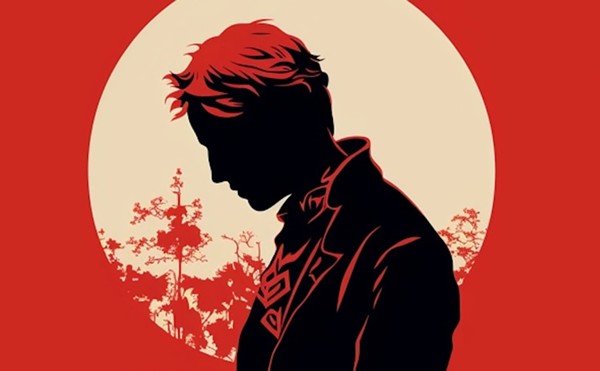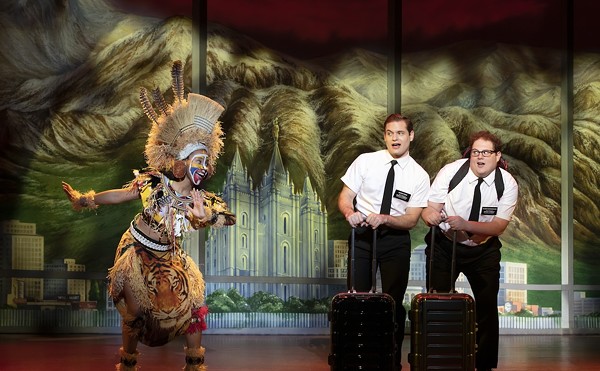Something almost has to disappear in America before it becomes revered," says Bill Christman, gesturing unnecessarily toward a wall teeming with vintage signs — a fraction of Art of the Sign, a sprawling exhibition that opens with a catered gala on Friday, April 13, at Ars Populi Gallery.
Stunning in size, scope and scale, the show packs its profoundest power in the riot of cultural iconography on display, nearly all of it tied to St. Louis: Sir John Falstaff, whose fat face launched a million beery hangovers. A weathered cardinal, perched not on a bat but on a "BAR," outlined in light-bulb sockets. A rare prototype from a 1940s-era company called Missouri Jewel Light, whose faceted glass letters spell out a flickering Meadow-Gold Ice Cream & Drugs.
"They halted production on moving signage, as it was found too distracting," explains Christman, who's 64. "Then architects got snootier, and cities developed sign ordinances drafted by architects. Then they hated neon because they found it cheap, vulgar and tawdry. Try to think of Times Square and Las Vegas without signs — they'd be wastelands."
Postmodern theorists would surely agree. Christman's connection to signs, though, is neither postmodern nor theoretical. As he navigates the warren of rooms that comprises the exhibit he co-curated, he describes each piece with the surgical precision that could only come from a practitioner of the craft. Christman quit the sign-painting business more than two decades ago in order to devote himself full-time to fine art — Ars Populi doubles as his studio — and today St. Louisans can find his handiwork all over town, perhaps most famously at Beatnik Bob's Museum of Mirth, Mystery & Mayhem inside the City Museum. His homage to bohemia, Joe's Café, is the stuff of legend in Christman's Skinker-Debaliviere neighborhood and beyond; its sporadic schedule of music events and invite-only policy have combined to create a speakeasy vibe that — improbable as it might seem in this day and age — is uncontrived and genuine.
The idea for an exhibition hatched at a local diner. Christman and fellow sign connoisseurs Jim May and Greg Rhomberg, meet each week to swap sign stories over breakfast. May owns the Purple Cow, a long-time fixture on Cherokee's Antique Row; Rhomberg is CEO of Nu Way Concrete Forms Inc., a construction-supply company and the proud owner/curator of what he calls Antique Warehouse (www.antiquewhs.com). All agreed that to assemble a private collection (as they had), and then not share it with the population at large (as they hadn't), borders on criminal.
"The reason why suburbs and all that ugliness exist is because people don't have any aesthetic criteria," Christman asserts. "Part of what motivated us to put this show together was so that people's aesthetic awareness could be elevated. If people collect beautiful signs and keep them from public view, I think they're jerks."
Rhomberg agrees, a little less volubly. "We want to introduce people to what's out there," says the 47-year-old entrepreneur and self-taught antique restorer. "That's really the bottom line."
There is, to put it mildly, a lot out there. Art of the Sign appears to cover every conceivable process, form and material from signage's pre-digital era: Gilded. Molded. Sculpted. Glue-chip glass (an antiquated, visually dazzling technique that utilizes gold leaf). Handcarved wood. Neon. Plain-old light bulbs. Barber poles and other emblematic iconography. Wall-mounted displays. Terra cotta. Stone. Motorized contraptions. Contemporary signs fashioned as works of art.
There's even a hand-lettered cardboard sign a hitchhiker gave Christman after bumming a ride. (To Memphis.)
The trio didn't limit the show to their own finds.
David Hutson, owner of Neon Time, a sign-restoration company in St. Charles, lent his considerable expertise to the project, repairing broken signs and performing the lion's share of installation work. He also contributed a large sign crafted by the Federal Brilliant Company of St. Louis for Big Boy's Restaurant. It's a masterpiece in neon and porcelain. Perched atop the establishment's block-lettered name, a gap-toothed and balding waiter jovially balances a roast turkey on a plate. His black-porcelain tuxedo glows in blue from the top of his tailcoat down to the cyan spats that set off his shiny black shoes. His pink hands are improbably tiny.
Other pieces arrived by way of the Smithsonian Institution and the Renwick Gallery in Washington, D.C., the American Sign Museum in Cincinnati and a far-flung network of sign buffs who responded to the exhibitors' call for contributions. Most, though, were sourced locally and reflect the history of St. Louis' sign industry, not to mention the evolving personality of the city itself.
One of Rhomberg's favorite items from his collection is an import: a diorama made in Waltham, Massachusetts, in 1934. Against the backdrop of the Waltham skyline — complete with miniature billboards and wall-painted signs that can be detached and rearranged — 21 vehicles of all shapes and functions scoot along a motorized bicycle chain. The display was missing three of its cars; Christman crafted replacements, tailoring each one to a member of the sign-obsessed trio of exhibitors.
Were it not for Christman and his co-conspirators, a sizable swath of St. Louis workmanship and cultural iconography would have been reduced to rubble long ago. But despite the proliferation of digital manufacture and its corollary, planned obsolescence, the craft of signmaking is regaining momentum. Printmakers, knitters, skateboarders and graffiti artists alike have appropriated the medium, and handcrafted signs both vintage and new are finding a fresh subcultural niche in the DIY movement.
"There's a whole generation that didn't come up in a craft-slash-maker's tradition," says Eric Woods, founder of the Cherokee Street letterpress and design shop Firecracker Press. "My grandpa knew how to cut wood, my dad knew how to cut wood — then here I am: Couldn't chop a log if I wanted to! But at the same time, I'm very curious about how to make something. If you look at something that's old — an old sign, an old print — you become curious how this thing, and knowledge of how to make it, came about. There's a certain group of people my age and younger that want to know how things are made. People still want something that's real, something that's physical."
Woods' activist bent seems to come from the same roots as Christman's own love for the medium. "Back in the '80s," Christman says, we were all involved in this thing called the Letterhead Movement. There used to be annual sign conventions, and maybe 50 people would show up. Then it grew to thousands of people, with international participants. (And golf tournaments!) Originally, though, it was much like a religion."
Art of the Sign offers physical evidence that the human capacity for reverence can manifest itself in just about any form imaginable. A great big ice cream cone made of terra cotta, for instance, on loan from Larry Giles of the St. Louis Building Arts Foundation. (The brand, Rolled Gold, subsequently made a profitable switch, to pretzels.) A ticking neon clock, courtesy of David Hutson. A portly pastry chef captured in profile, midstride, beaming down at the chocolate layer cake on a platter that has perched for a lifetime on his outstretched left hand.






